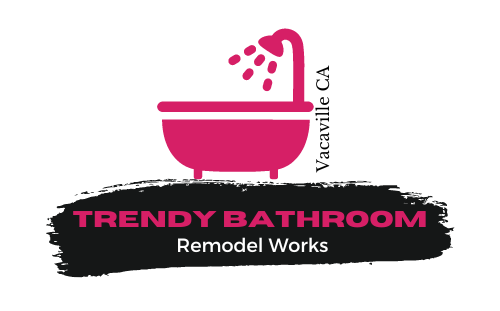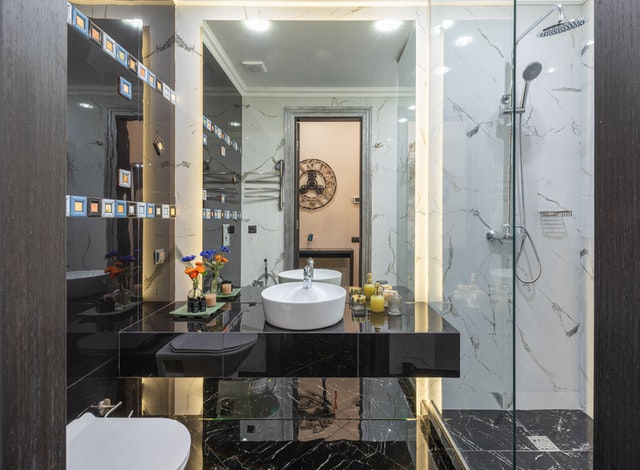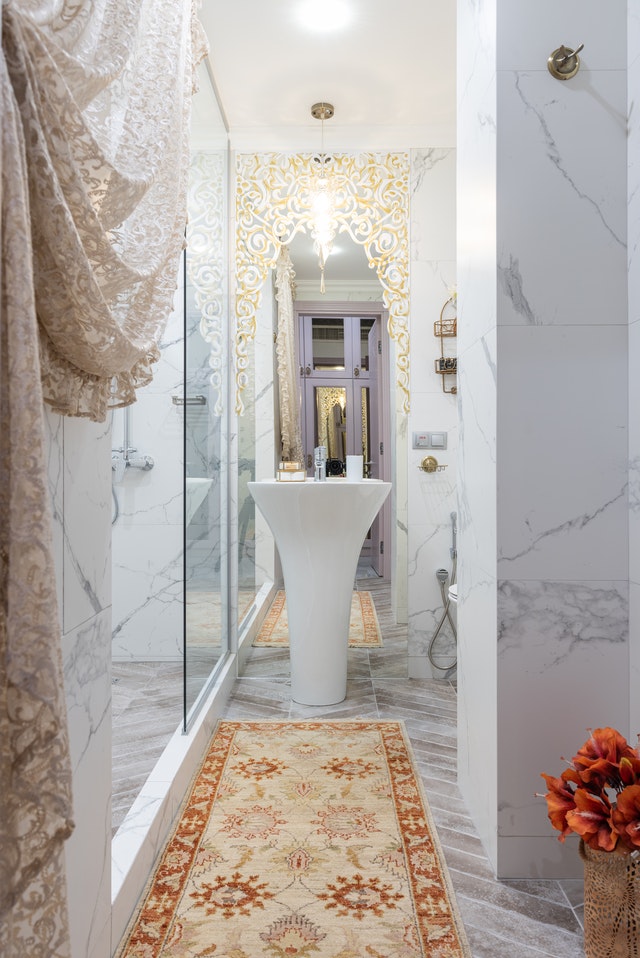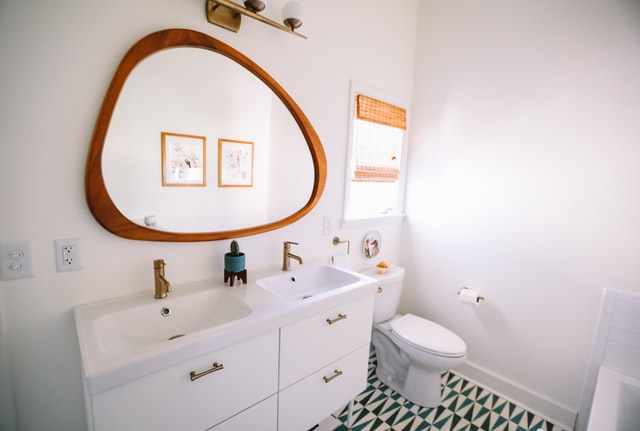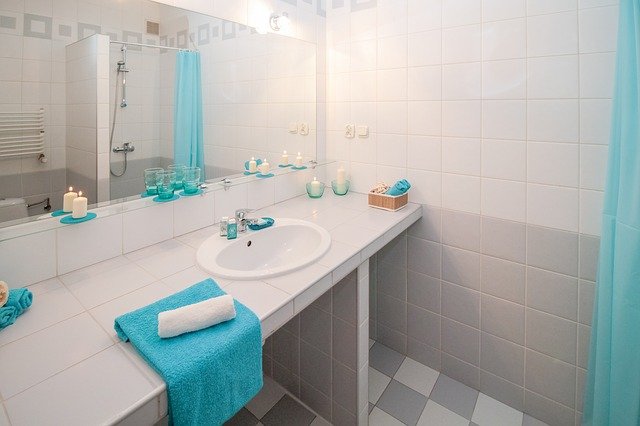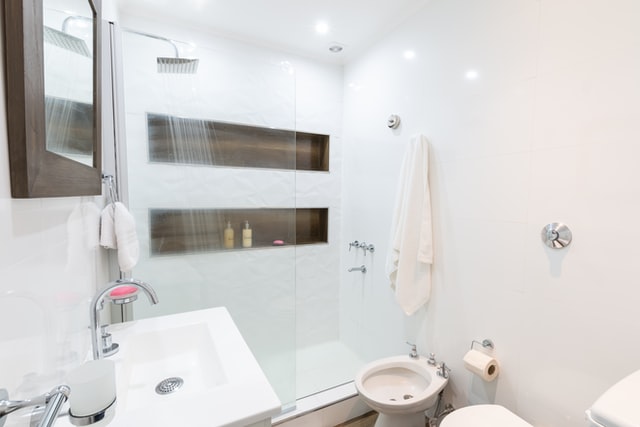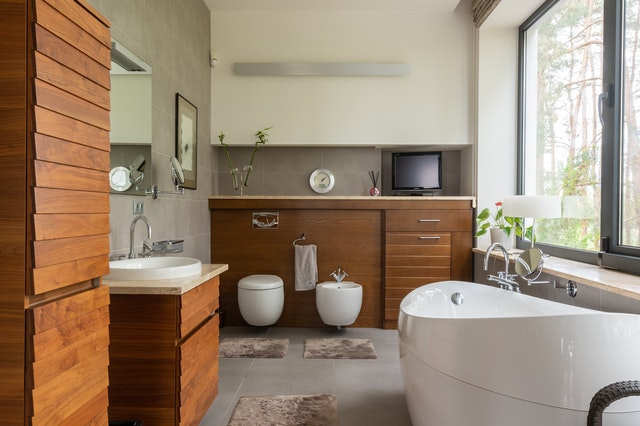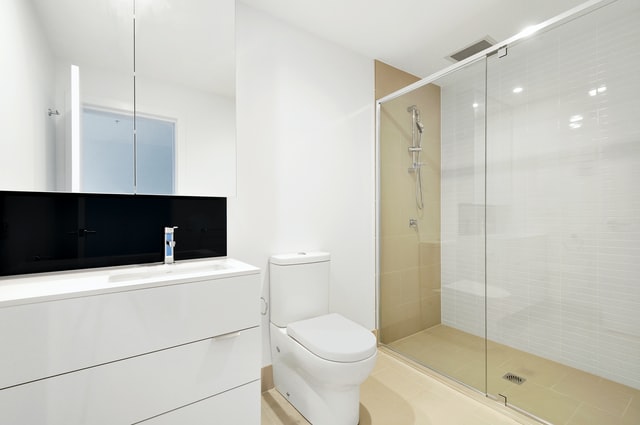Bathrooms Surfaces
Bathrooms Surfaces
This is an excerpt from the Book called “Bathrooms “ by Susan Llillstrom. Continue reading to learn more about Bathrooms Surfaces, thanks to the author.
The Surfaces
Ideally, the floors, walls, and countertops in your bathroom perform two important services at the same time-they establish the stylish look of your choice, and they provide easy-clean surfaces that stand up to wear and tear and resist moisture and humidity. There are many materials from which to choose-stone, ceramic tile, glass, concrete, solid-surfacing, plastic laminate, wood, and metal-and most of them come in a mind-boggling array of sizes, shapes, and colors. The following information and portfolio of photographs will help you make a selection that’s right for you.
- Stone
- Ceramic tile
- Glass
- Concrete
- synthetics
- Wood
- Metal
Nothing beats stone for luxurious beauty and durability in the bath. Granite and marble are perennial favorites, and limestone and slate are fast catching up. In small doses, say on a countertop, stone blends with any decorating style. Large expenses generally produce a cool, contemporary look; but marble, favored by the Victorians, is often used in period or traditional designs.
The beauty of stone derives from its grain and infinite variety of vibrant colors. Finishes vary from glossy and polished, to hone and matte, to tumbled—an aged, weathered look that has lately gained favor. Polished stone is slippery when wet. A honed or tumbled finish is safer for bathroom floors. Soapstone, which ages to a rich charcoal gray that you may remember from the counter of your high-school chemistry lab, is gaining popularity, as are slate, available in a variety of surprisingly bright shades, and creamy-beige limestone. No two pieces of stone look alike, which is part of its appeal; if you’re seeking uniformity, consider engineered stone, an up-and-coming material created by binding stone chips and powders with resins. Nonporous and easy-care, engineered stone comes in a wide range of colors, including blues and yellows not found in natural materials.
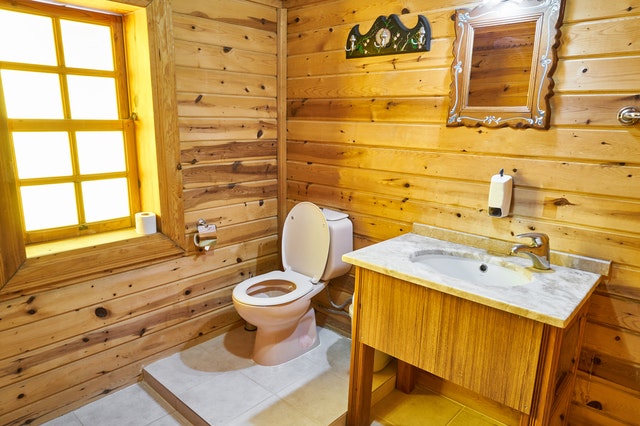
The quality, durability, and even porosity of stones can vary greatly depending on where they are quarried and who is selling them. Seek out a reputable dealer and shop carefully.
Some people like the look of a little wear and tear with their stone surfacing, but others, having spent a bundle on the stone, want it to look next to perfect. As a surface for the bath, natural stone is almost perfect—but not quite. Most stone is hard, durable, and water-resistant. But even extra-hard granite may stain if exposed to harsh chemicals or acidic substances, and it requires a periodic application of a sealant.
Marble and limestone are beautiful in the bath, but they stain and scratch easily. Be cautious with hair colorings and other chemicals, and wipe up spills right away. Use wax to protect a marble finish, and safeguard limestone with a sealant.
Protect all types of stone from gritty dirt, which dulls finishes over time, by sweeping regularly and damp-moping with a small amount of mild, nonacidic soap or cleaner. Too much soap will leave a film. Polished stone may benefit from a periodic application of a commercial polish to enhance luster and beef up protection, and repair kits are available for some stains and scratches.
Ceramic tile
Ceramic tile has been used to beautify bathrooms for many centuries, and it remains a good choice today. It is durable—more so than some types of natural stone, in fact—and impervious to stains and moisture. Ceramic tile is manufactured in many sizes and shapes—from tiny hexagonal mosaics to 12-inch squares—and in a wealth of colors—neutrals and earth tones, pastels, brights, and iridescents. This dazzling variety permits personal expression with one-of-a-kind designs and configurations. Ceramic trim pieces and decorative borders can also create interesting effects and even mimic architectural detailing.
Glazed, shiny tiles work well on counters and walls but are not suitable for floors in the bath. For safety, choose a floor tile with a gritty, nonslip surface.
Ceramic tiles themselves are a snap to clean, but grout lines pose a challenge. You can keep grout sparkling by treating it with a sealer and then cleaning it regularly with a mild bleach solution. Even easier, use colored grout.
When you shop, tell your dealer where you will use the tile, how much traffic it will get, and how long you need it to last. An experienced dealer will help you make the right choice.
Ceramic tile is composed of clay, water, and other naturally occurring substances fired at high heat.
Glazed tiles are covered with a ceramic coating that gives the tile body its color and finish. The glaze effectively repels moisture, stains, bacteria, allergens, and odors, but it also creates a shiny, potentially slippery surface. The higher the glaze, the less appropriate for use on floors. Glazed tiles are easy clean, which is an important consideration in a room that requires daily maintenance.
Unglazed tiles look natural, rough, and rustic because they derive their texture and color from clay rather than from a colored coating. Unglazed quarry tiles in rich beiges, browns, and rust are typical of the look. They are most often used on floors where their thickness and density make them especially durable and slip-proof. Some unglazed tiles are stain resistant, but most require periodic sealing.
Glass
Glass is an exciting surface for sinks, countertops, walls, and even floors. Clear or colored glass sinks and counters are showing up more often, as are glass tiles. Available in many sizes and in translucent, transparent, or opaque finishes, glass tiles offer an amazing range of color—shimmering jewel-tones, frosted pastels, ambers with the look of carnival glass, and dark shades shot through with silver or gold. Large, smooth glass tiles may be too slippery for a bathroom floor, but smaller pieces with many grout lines can provide a safer, gritty surface.
Glass is durable and easy to clean, but installation is costly. If you find that a large expanse of glass tiles exceeds your budget, consider combining them with less pricey synthetics, ceramic tiles, or even wood. Use the glass as a border or cover only a small area, such as a vanity top.
Glass block, an architectural staple in the 1930s and’40s, has made a comeback in bathrooms. Because they transmit 80 percent of available natural light, these translucent blocks are ideal substitutes for windows when privacy is desired, and can also be used as shower walls or privacy partitions without compromising light or openness. Available in many square or rectangular sizes, glass block also offers several finishes and textures.
Concrete
Considered daring and unconventional only a dozen years ago, concrete is now gaining wide acceptance for surfaces in the bath, as well as for tubs and showers. Surprisingly, this mundane material can be formed into graceful shapes and topped with several types of finished—rough and rustic, glossy and polished, or subtly glowing. If you were expecting a boring, sidewalk-like surface, you’ll find the color selection surprising, too. Although many homeowners prefer muted, earthy shades, such as ivory, pearly gray, or sand, vivid hues are also available, depending on the skill and inventiveness of the concrete fabricator.
Treated with chemicals, pigments, and epoxy coatings—or mixed with bits of metal or colored glass—concrete also takes on the look of stone this potential for uniqueness is part of this material’s appeal.
Concrete
Concrete is a natural choice, of course, for a minimalist or contemporary decorating scheme, but used in conjunction with more conventional elements, such as wood or ceramic tile, it is equally at home in a traditional-style bathroom. Concrete counters are not available off the shelf, nor is this a job for a do-it-yourselfer. To assure good results, you will need a specialist to fabricate the concrete for you. Although concrete itself is not expensive, the professional fabrication will set you back, in total, about as much as natural stone surfacing would. Still, it is important that you seek out an experienced contractor or fabricator. And before you make a decision to go with concrete, ask the fabricator to show you a counter, sink, or tub surround that has been in place for some time.
Concrete facts
If you’re afraid that a concrete counter or tub surround in your bathroom will resemble the floor in your garage or the sidewalk outside your house, take another look. The colors, finishes, and special effects possible with concrete are quite varied, and none of them resemble a nasty garage floor. In fact, even a simple concrete application without any bells and whistles appears sleek and streamlined.
If it is treated with a sealant, concrete will stand up well to wear and moisture, provided you wipe up spills right away, clean the surface regularly with a nonabrasive cleanser, and renew the sealant twice a year. Hairline cracks do tend to develop, but they are generally not structural and can be easily repaired. And not to worry—most experts say concrete gets more beautiful as it ages.
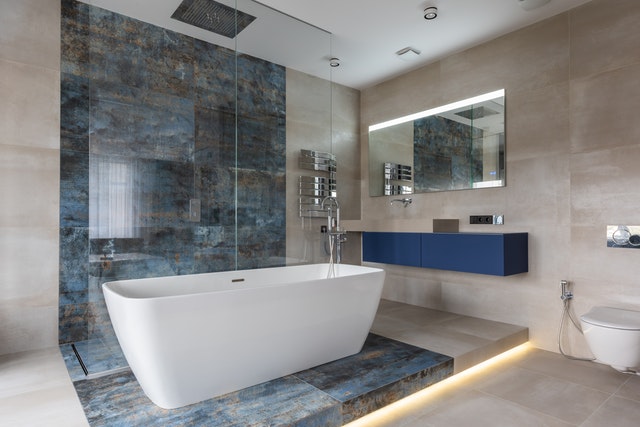
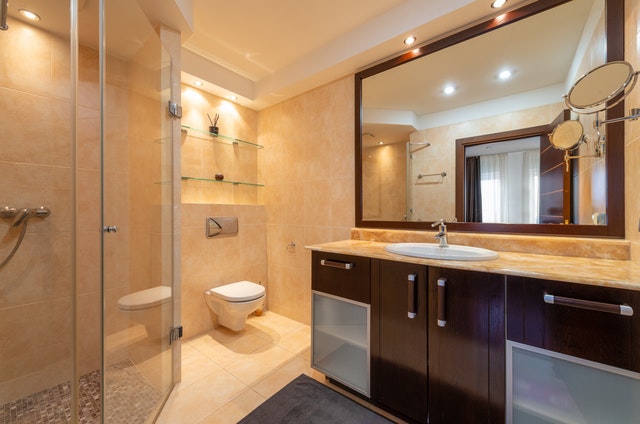
Synthetics
Since the 1930s, when plastic laminate first hit the market-place, manufacturers have been hard at work creating surfacing products that resemble stone but cost less money and need less maintenance. Available in hundreds of colors, patterns, and finishes, laminates are the least costly of these synthetics, and post-formed, ready-to-install laminate countertops are even more economical. Laminate flooring mimics wood, tile, or stone and provides easy-clean durability underfoot, as does resilient vinyl flooring, another cost-conscious choice, which is available in a multitude of patterns. Introduced about 30 years ago, solid surfacing—a tough, color-through material made of polyesters or acrylics—can look like stone but is more malleable and can be formed into many shapes, including architectural edges and integral sinks. Composites mix quartz compounds with man-made resins to create surfaces that are nearly impervious to wear impervious to wear and tear. In a recent technological advance, some synthetic countertops offer an antibacterial layer that repels mold and mildew.
Fabulous fakes
When it comes to bathroom surfacing materials, the real thing isn’t always the best thing. True, nothing beats the beauty and luxury of stone. But if your budget precludes it, why not check out solid-surfacing or composite materials? Both look almost as good as stone, most applications cost slightly less, and the materials have been engineered to resist the chemicals and acidic substances that can stain marble or granite. Because the color goes all the way through solid-surfacing material, scratches and nicks can be gently sanded away without leaving a scar—a big advantage over both high-end stone and low-cost laminate, which once scratched, are difficult to repair. Solid-surfacing material does not require any special treatment, just regular swipes with a damp cloth.
Composites, which are made of quartz particles combined with acrylic resins, duplicate the pigmentation, swirls, and veins of natural materials, particularly granite. The color range incorporates both earth tones and Brights, such as blue, green, red, and yellow. Also a low-maintenance product, a composite surface is extremely hard and durable, resists scratches and stains, and unlike stone, does not need to be sealed either for protection or to enhance its shine.
Wood
Many bath surfacing materials have a rich look, but none of them can compete with the gleaming and familiar warmth of wood. Conventional wisdom has long dictated that wood and the moisture in the bath should not mix, but there are ways to make it work.
Underfoot, wood is friendlier and more resilient—and warmer—than cool, hard natural stone or ceramic tile. Any wood species successfully used for flooring is appropriate for the bath provided it is installed and prepared properly. However, do keep in mind that certain woods resist moisture, and the decay that results from it, better than others, notably cedar, redwood, and teak. Narrow floor boards—w inches wide, for example—work better in the bathroom than wide boards. The skinny strips absorb less moisture and swell and shrink slightly less than wider boards. The skinny strips absorb less moisture and swell and shrink slightly less than wider boards. To protect any wood floor from the effects of moisture and humidity, apply several coats of polyurethane, or try one of the new sealants called watershed protectors, all of which repel water better than an oiled or waxed finish. However, even a protected floor can be damaged by standing water, so wipe up spills right away and use a bath mat when you step out of the bathtub or shower.
Finish wood countertops with the same sealants you would use on the floor, or invest in a ready-made, pretreated butcher-block counter. There is some evidence that natural substances in wood prevent the buildup of bacteria, a bonus for a bathroom countertop. Resist the impulse to cover the shower in wood—the constant exposure to water takes a serious toll, even on moisture-resistant species that have been sealed.
Vacuum or sweep wood floors and wash regularly with a barely damp mop and mild cleanser or special wood soap. Stay ahead of moisture damage by renewing protective finishes every few years and installing a ventilation system to whisk away humidity.
Metal
Further proof that bathroom design has come a long way from the bland box with three white fixtures is the appearance of metal as a surfacing material. Frequently used in smart-looking kitchens on appliances, and occasionally on countertops, metal seems an unlikely candidate for bathroom use. But it is coming on strong lately, especially in the form of tiles and on walls, as well. Although this cutting-edge material is practically indestructible, which is an advantage; it is also cold to the touch and to the eye, which is not especially desirable. To keep this coolness from dominating, designers typically use metal sparingly, often in combination with softer, warmer materials. For example an expanse of metal tiles might be offset by a limestone or wood floor, or intermixed with ceramic tile. For a really innovative look, try a vanity counter in copper, bronze, or brass.
Metal is an especially sanitary surface—it repels bacteria and discourages the growth of mildew. It doesn’t absorb stains, won’t crack, and it cleans easily. In time, all types of metal will scratch, particularly copper. To mask marks, choose a brushed, textured, or matte finish. Copper can be sealed against discoloration, or you can let it age gracefully to a burnished patina.
